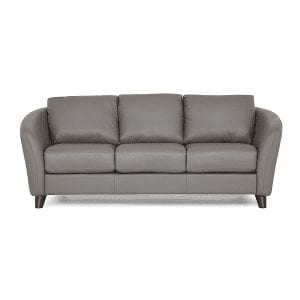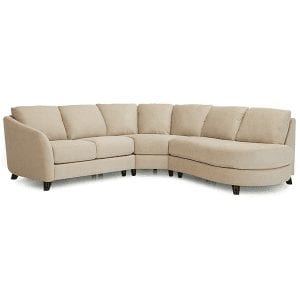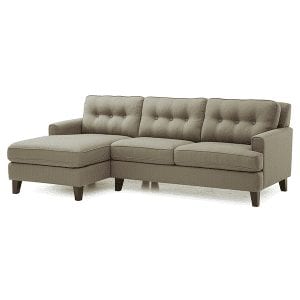Wood furniture isn’t all that different from your car or TV. If it’s not cleaned periodically, what was once shiny and spotless becomes dull and dirty.
Remember when the reddish–brown tint of your antique cherry dining room table gleamed? Or your dark oak coffee table seemed to shimmer in the sunlight? Not anymore. As dust, dirt and dings accumulate over time, your wood furniture has a way of losing its luster.
If your wood furniture is looking a tad sad these days, it’s probably overdue for a cleaning. But unlike your oven, there’s no button you can push to miraculously get rid of the gunk. Nope. Cleaning wood furniture requires old-fashioned elbow grease. So grab your favorite microfiber cloth because it’s time to remove the grime.
With three easy steps, you should be able to restore the natural beauty of your wood furniture using common household items (and maybe a fresh tin of beeswax). Here’s a closer look at exactly how to clean wood furniture and make it shine like new.
Dusting Is a Must
Dusting is the first step when cleaning wood furniture—and it’s not one you want to skip. Whether you can see it or not, there’s a layer of dust that has to go before you can take aim at the dirt lurking beneath. Houses are just dust traps, plain and simple.
Even if you regularly dust your wooden furniture, you’ll want to make a quick pass with a damp cloth—never a dry one—to remove any loose particles. Slightly dampen a microfiber cloth or an old cotton T-shirt and wipe down the wooden surface in circular motions. Long, linear strokes will just lead to wet clumps of dust. After it’s clean, use a dry section of the cloth to get rid of any moisture. Here are more tips to up your dusting game.
Wood Furniture Dusting Tips
- Don’t use a duster. Felt or feather dusters may be super convenient, but they’re better at rearranging dust than removing it.
- Use a clean cloth. If you have a habit of reusing the same dust cloth, you’re probably just making things worse. Don’t dust your furniture with a dust-covered cloth.
- Keep dust away with dryer sheets. Once you’re done cleaning and polishing wood furniture, rub a used dryer sheet on the clean surfaces. The fabric softener will help deter dust particles from sticking.
Time to Remove the Grime
After your wood furniture has been freshly dusted, it’s time to break out the cleaning supplies. But what you use depends on a few factors. Is your wood furniture painted? How much dirt is there? Stubborn buildup of grime might require a more robust wood furniture cleaner to get the job done.
A water-vinegar solution works well for cleaning painted wood furniture. For natural wood finishes, start with a mild cleaning solution. Add a few drops of dish soap to a cup of water, dip your cloth in and then lightly scrub any spots where you see a grimy film. Apply firm pressure with your fingertips and check frequently to see if it’s working. (The link in this paragraph locked up my Word twice – please check)
If you’re not having much success, you may want to try mineral spirits, which are similar to paint thinner but not as harsh. Beware, mineral spirits are a chemical and they do have a turpentine-like odor, so you’ll want to ventilate the room. But a little on a cloth will go a long way. Here are a few more tips for how to clean wood furniture.
Wood Furniture Cleaning Tips
- Find a test spot. Always test your cleaning solution or spray on a less-visible spot to see how it reacts with the stain or finish. Better to have a micro-level mishap than ruin an entire piece of furniture.
- Dry up any moisture. After you’ve scrubbed the furniture with soap and water or a wood cleaner spray, run over the surfaces with a dry cloth or towel. Liquid has a way of finding cracks and crevices—even on finished wood.
- Avoid ammonia or rubbing alcohol. These chemicals are solvents, not cleaners. Use them for stripping paint or varnishes but not when cleaning wood furniture.
Wood Wax for the Win
With your wood furniture now free of dust and dirt, why not go the extra step and really make it sparkle? Polishing wood with furniture wax will amplify its natural glow and provide a protective layer.
Options abound when it comes to waxing wood furniture. Beeswax furniture polish is a common choice that’s easy to apply, and you can even make your own. For antique wood furniture that’s not oil-finished, try a paste wax. It’s a bit harder to apply but will fill in scratches and leave your wood looking immaculate.
Gently rub the wax into the wood using a cheesecloth and let it dry for 15 to 20 minutes. Buffing is the last step, and a dry microfiber cloth will do the trick. Wipe the wood wax off in smooth, circular motions until you don’t see any streaks. Here are some other tips to keep in mind when waxing.
Wood Furniture Waxing Tips
- Go with the grain. Always apply furniture wax with the grain. This will ensure it gets into any grooves and will reduce smearing or streaking.
- Don’t overdo it. Take an incremental approach when waxing wood furniture. Apply a little at a time. Large globs of wax will just gum things up.
- Consult the pros. If you’re buying new wood furniture, be sure to ask the sales staff what they recommend. Lean on their insider knowledge about which types of wax work best for certain types of wood.
If you need more pointers on how to clean wood furniture and give it a lasting sheen, Lifestyles Furniture is a great resource. We carry a wide selection of solid wood furniture that includes dining tables, occasional tables and media centers. Visit our showroom or contact us with your questions about wood furniture cleaning and care.



